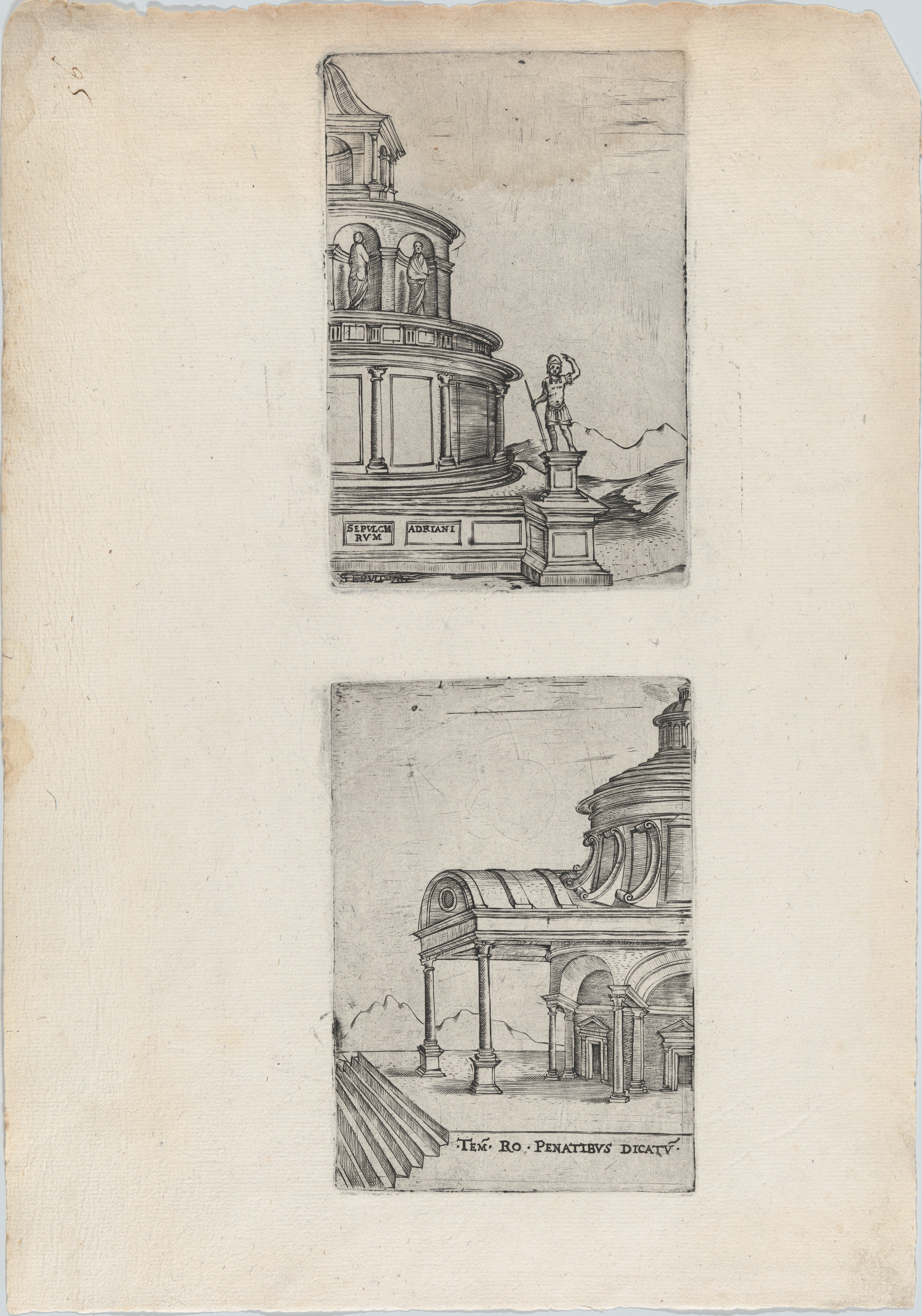Tem. Ro. Penatibus Dicatu, from a Series of 24 Depicting (Reconstructed) Buildings from Roman Antiquity
Anonymous, Italian, 16th century Italian
Previously attributed to Monogrammist G.A. with the Caltrop Italian
Not on view
Perspectival depiction of a temple, seen in side view (?), referred to as the ‘Tem. Ro. Penatibus Dicatu.’. The building is characterized by its central plan and placed on high podium with steps leading up to it on the left side. The main body of the building is circular in shape, with an avant-corps on the front side. The building is crowned by a stepped cupola supported by a drum decorated with C-volutes and a lantern at the top. While the building appears to be fantastical in nature, it bears some resemblance, and almost seems a pastiche of the centralized temples depicted by Raphael and Perugino in their respective versions of the ‘Sposalizio’, and in the latter artist’s ‘Delivery of the Keys’.
The print is part of a group of architectural prints depicting buildings from Roman Antiquity, ranging from triumphal arches to bath houses, temples and palaces in Italy, France and Spain. Some of the buildings have been artificially reconstructed based on Medieval descriptions, while others are depicted in their ruinous states. The plates are known in several (uncatalogued) states, and have undergone minor changes over time. Several titles of buildings have been changed, and the plates have been cropped as a result of plate cracks and oxidation.
Most copper plates for this series have been engraved on both sides. This print is taken from the same plate as the 'Arcus Georgii'.
This image cannot be enlarged, viewed at full screen, or downloaded.
This artwork is meant to be viewed from right to left. Scroll left to view more.




